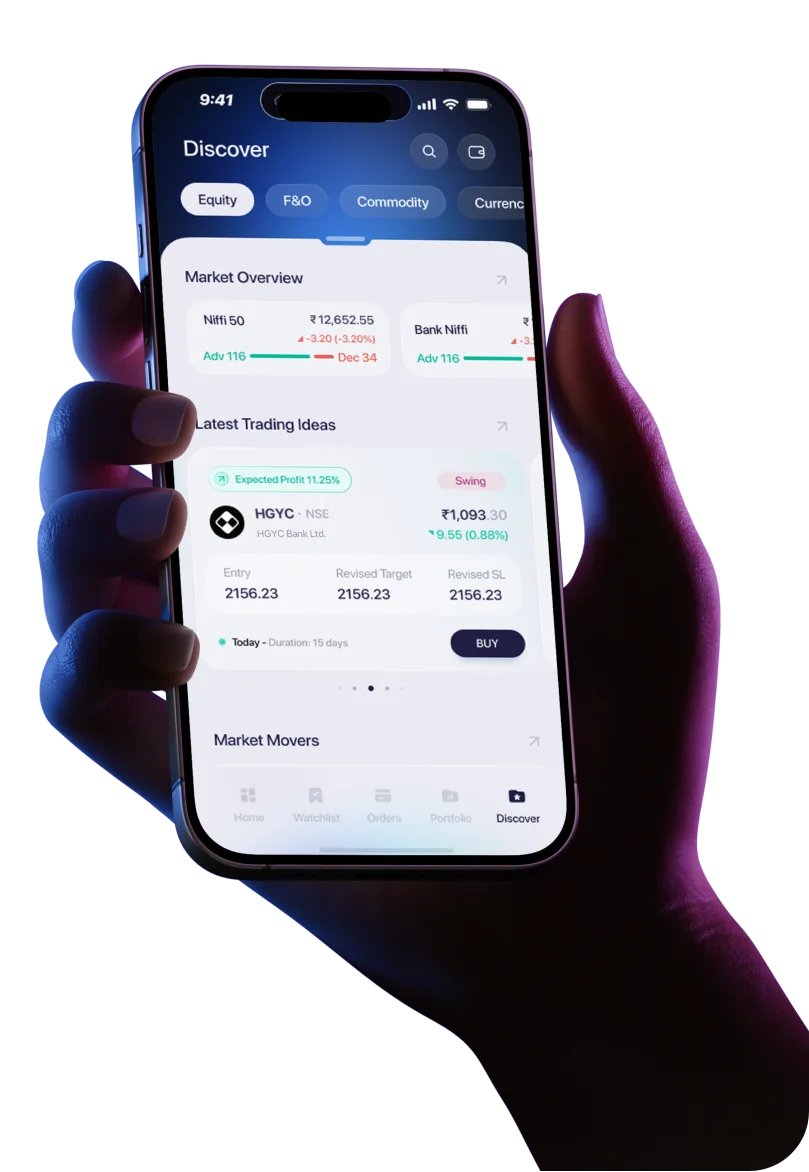In this article, we will discuss
- What is a Line Break Chart?
- How a Line Break Chart Represents Price Changes
- Decoding the Creation of a Line Break Chart
- What Does a 3-Line Break Chart Tell You?
- Creating a Trading Strategy With a 3-Line Break Chart
- Conclusion

Price-based charts are among the most useful tools available to traders today. If you have a history of engaging in short-term trading, you may be familiar with trading chart patterns using candlesticks. Advanced traders also rely on other types of price tracking tools like point & figure charts and Kagi charts. They make it easier to spot trends and create trading strategies based on price changes.
However, if you want a clearer picture of price reversals in the market, a line break chart can help. Though the 3-line break chart is the most common variant of this tool, other variants like 6-line breaks are also used. In this article, we aim to explore what 3-line break charts are, how they are created and interpreted, and how you can use them to formulate better trading strategies.
What is a Line Break Chart?
A line break chart is a type of price-based charting tool that primarily helps you identify price reversals in the market. When you hear the term ‘line break,’ you may assume that the chart uses lines to represent the price points of stocks and securities. However, that’s not the case. Despite its name, a line break chart uses vertical blocks to display price levels. These blocks are the ‘lines’ referred to in the term ‘line break chart.’
The bullish bars, which represent upward price movements during a trading session, are typically represented in green. The bearish bars, on the other hand, indicate downward price changes during a trading session and are represented in red. Other colours may also be used. Since the blocks are essentially referred to as lines, green bars are also known as ‘up lines’ and red bars as ‘down lines.’
Although the line break chart may seem simple at first glance, it may be quite confusing for beginners. This is why you need to have some prior experience with using Kagi charts and Renko charts to better appreciate how line break charts are created and used.
How a Line Break Chart Represents Price Changes
A line break chart may resemble a typical stock or currency trading chart. But when you look closer, you will see that each line is a block that does not display any wicks or shadows. This is due to the fact that unlike candlesticks, which monitor price highs, lows, open and close, the blocks in a line break chart only use the price level to determine when a new line must be drawn.
The typical bar in a line break chart also displays time changes — but it is not done linearly. The time frame shown is adjusted to match the price changes represented on the chart. So, the blocks form the primary level for creating a line break chart, and the time is shown on the horizontal axis accordingly. This essentially means that if no new line/block is drawn over a given period, that duration will not be marked on the chart.
Decoding the Creation of a Line Break Chart
If you want more clarity on how time and price are both integral to these charts, let us take a closer look at how a line break chart is created. We will break this up into three key areas: the origin of a new line/block, the continuation of the current trend and its reversal.
-
The Origin of a New Line
A new chart can open with a classic bar that represents any trading session that you choose as the beginning. Thereafter, to draw a new line or bar, you must compare the session’s closing price with the previous line’s closing price. If the new closing price is higher, you should draw a green block or an up line that is as tall as the price difference. Similarly, if the new closing price is lower, you should draw a red block or a down line that is as deep as the price change.
-
Continuing a Trend
A line break chart is primarily used to spot trend reversals. This also means that the chart represents trend continuation clearly. A bullish trend continuation involves drawing a new up line at the end of an existing series of other up lines. Conversely, to represent a continuing bearish trend, you draw a new down line instead. However, keep in mind you don’t always need to draw a new line even if the current trend continues. Ultimately, whether or not a new block appears depends on the closing price of the current session.
For instance, say the price of a stock has been increasing steadily over the past few days and today, the price closes above the previous block’s high. In this case, you introduce a new up line that is as long as the difference. But if the new closing price is within the price range of the previous block, no new line is drawn.
For a bearish trend, the opposite is true. If today’s closing price is below the previous block’s low, you should draw a new down line to mark the difference. But if the new closing price is within the range of the previous block, you need to wait for a more noticeable price drop to introduce a new block.
-
Trend Reversal
This is perhaps the most crucial part of a line break chart. The setting for the ‘number of lines’ becomes vital here because it tells you how many previous lines or blocks will be compared to the current closing price to determine if a reversal should be represented. For instance, in a 3-line break chart, the three lines before the current line are important in identifying if the price has reversed. Let us look into each type of reversal for more clarity on how new lines are plotted.
-
Bullish Reversal
Say the current trend is bearish and your 3-line break chart has a series of down lines. Now, if the stock closes higher than the highs of the 3 previous blocks, a new reversal line will be drawn. This will be an up line representing the upward price reversal, and its length will go past the high point of the oldest of the 3 previous lines. Similarly, if you choose a 6-line break chart, you must consider the previous 6 sessions instead.
-
Bearish Reversal
A bearish reversal occurs at the end of a prevailing bullish trend. For instance, in a 3-line break chart, say the closing price in today’s session dips below the lows of the previous 3 blocks. You will then have to draw a new down line to represent the reversal. The length of this line will extend below the low point of the oldest of the 3 previous lines. This pattern can be repeated for different numbers of sessions too, like a 6-line break chart that considers the previous 6 sessions.
What Does a 3-Line Break Chart Tell You?
A 3-line break chart provides valuable insights into market trends and potential reversal points. It helps you identify the overall direction of the market by clearly showing uptrends with consecutive green blocks and downtrends with red blocks. The chart also filters out minor price fluctuations by focusing on significant moves that exceed the high or low of the previous three lines.
This makes it easier to spot trend changes and potential entry or exit points. Additionally, the varying time intervals between blocks can indicate the strength of a trend. Closely spaced blocks suggest a strong trend, while wider spacing may indicate a weakening trend.
Creating a Trading Strategy With a 3-Line Break Chart
If you want to develop a trading strategy using a 3-line break chart, consider the following tips:
- Trend Identification: Use the colour of the blocks to quickly identify the prevailing trend. A series of green blocks indicates an uptrend, while red blocks suggest a downtrend.
- Entry Points: Look for potential entry points when a new block forms in the direction of the trend. For example, enter a long position when a new green block appears after a series of red blocks, signalling a potential trend reversal.
- Stop Loss Placement: Set stop losses below the low of the most recent opposite-coloured block. In an uptrend, place stops below the last red block; in a downtrend, place them above the last green block.
- Take Profit Levels: Use previous support and resistance levels visible on the chart to set realistic take profit targets.
- Confirmation with Other Indicators: Combine 3-line break charts with other technical indicators like moving averages or RSI for additional confirmation of trend changes.
Conclusion
The bottom line is that 3-line break charts offer a cleaner view of price action and help you make more informed decisions. You can use these charts to place smarter market orders that can help you capture the prevailing trend or potential reversal in the market. To place market orders and limit orders easily from a seamless user-friendly platform, open an online demat account and trading account with Samco Securities and use the Samco trading app to become a better trader.
Disclaimer: INVESTMENT IN SECURITIES MARKET ARE SUBJECT TO MARKET RISKS, READ ALL THE RELATED DOCUMENTS CAREFULLY BEFORE INVESTING. The asset classes and securities quoted in the film are exemplary and are not recommendatory. SAMCO Securities Limited (Formerly known as Samruddhi Stock Brokers Limited): BSE: 935 | NSE: 12135 | MSEI- 31600 | SEBI Reg. No.: INZ000002535 | AMFI Reg. No. 120121 | Depository Participant: CDSL: IN-DP-CDSL-443-2008 CIN No.: U67120MH2004PLC146183 | SAMCO Commodities Limited (Formerly known as Samruddhi Tradecom India Limited) | MCX- 55190 | SEBI Reg. No.: INZ000013932 Registered Address: Samco Securities Limited, 1004 - A, 10th Floor, Naman Midtown - A Wing, Senapati Bapat Marg, Prabhadevi, Mumbai - 400 013, Maharashtra, India. For any complaints Email - grievances@samco.in Research Analysts -SEBI Reg.No.-INHO0O0005847



 Easy & quick
Easy & quick
Leave A Comment?